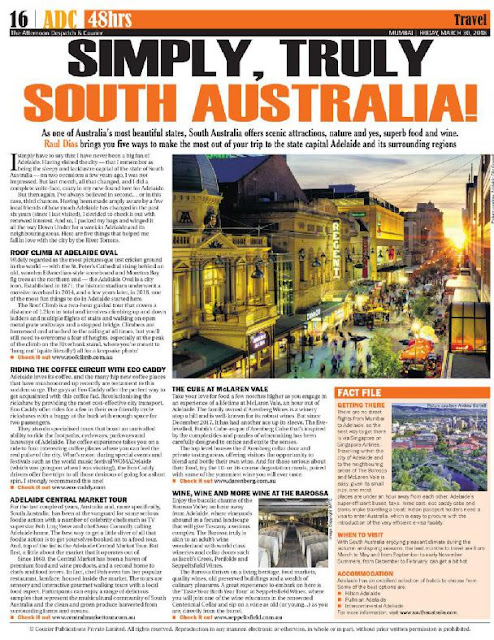From restaurants staffed by members of the transgender
and hearing-impaired communities to disabilities-friendly cafés offering
braille menus and more, inclusivity is very much on the menu at a few such path-breaking
eateries across India.
By
Raul Dias
This recently-opened café was launched with the intention of providing not just employment to the third gender, but also giving them a sense of identity and inclusiveness. With a staff of six transgender employees, including the manager and servers, this café dishing out everything from fluffy falafel with tahini yoghurt to a flavoursome butter chicken, truly walks the talk of its motto that’s emblazoned on its walls. It reads, ‘Be The Change You Want To See’.
Palm Beach Galleria Mall, Sector 19D, Vashi, Navi Mumbai 400703. Call: +91-9619204894
Kalakkal Café, Chennai
As India’s first ever ‘inclusive’ cafe, this ramp-equipped café in Chennai’s Kotturpuram neighbourhood is an initiative by Vidya Sagar, an NGO working for children and adults with special needs. Offerings like their scrumptious burgers and the retro-cool ‘goti’ sodas can not only be ordered off a Braille menu, but also with the aid of their very artistic pictorial menus. But that’s not all. The café has tactile walls and even some eating aids via a few nifty apps like All Access where users can scan logos and QR codes to access audio menus.
No 1, Ranjith Road, Kotturpuram, Chennai 600085. Call: 044-22364712
Om, Bengaluru
A few years ago, Bhavna Jain was looking forward to doing something different at her vegetarian restaurant Om in Bengaluru’s tony neighbourhood of Koramangala. A chance encounter with a visually impaired Bharatanatyam dancer, led Jain to seek the help of EnAble India, an NGO that works with the differently-abled to come up with a Braille menu that she followed up with an audio menu shortly. Today, this modest eatery serving tasty thalis meals sees a steady stream of visually impaired and other differently-abled people making it their de facto hang out spot every day.
18, 36, Ground Floor, Raheja Arcade, Near-Heart Beats, Koramangala 7th Block, Bengaluru 560095. Call: 080-40989595
Sheroes' Hangout, Agra
Run by a group of enterprising acid attack survivors, this bright and cheery café has amassed serious street cred every since it opened its doors a few years ago. And that’s not just because of all that inspiring girl power, but also because of its reasonably priced food. Here, take your pick from a selection of all-veggie delights like the home-style bhindi masala and the Indian street food mainstay, the gobhi Manchurian! The café also serves as a venue for organised events for social interaction such as debates, book launches, social awareness conferences and music session among other socially relevant initiatives.
Fatehabad Road, Opposite The Gateway Hotel, Taj View Chowraha, Tajganj, Agra 282001. Call: 0562-4000401
Mirchi & Mime, Mumbai
Two of this fine dining Indian cuisine restaurant’s greatest calling cards are a well-curated menu—with delights such as a melt-in-the mouth mushroom galouti kebab and a guinea fowl done Lahori style—and its wait staff. The latter is made up entirely of well-trained hearing and speech-impaired individuals. All the diner needs to do is simply point at the illustrated menu card and indicate the number of portions. An easy-to-follow gesture glossary is also appended to the menu to facilitate other dining accoutrements like cutlery, crockery, salt, pepper and spices.
Trans Ocean House, Lake Boulevard, Hiranandani Business Park, Powai, Mumbai 400076. Call: 022-41415151
(An edited version of this piece was first published in the 9th April, 2018 issue of India Today magazine)








